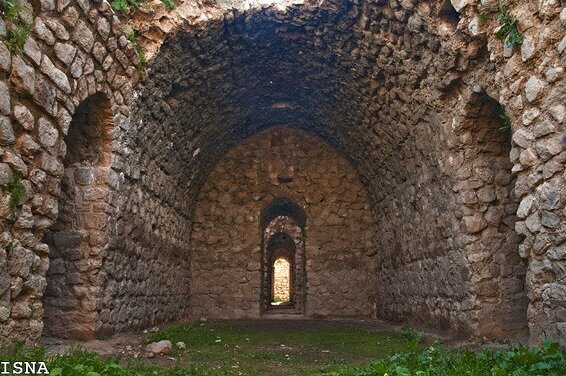Sassanian ruins of Zije Manije to undergo restoration

TEHRAN - The government has allocated funds for the partial restoration of Zije Manije, located in the village of Pataq near the modern city of Sarpol-e Zahab in Kermanshah province.
The project is part of a broader effort to preserve the Sassanid Archaeological Landscape of the Kermanshah Region, the director of archaeological landscape said on Thursday.
Kiomars Aazami emphasized the historical significance of Zije Manije, describing it as one of the most well-preserved structures from the Sassanid era in Iran.
“Given the age of this structure, all of its arches require restoration, but some arches need urgent attention,” Aazami stated.
The official said the restoration project will also include flooring work and measures to divert surface water, particularly by modifying nearby agricultural channels that have been damaging the site.
The Sassanid landscape stretches 150 kilometers from a fortress in Eslamabad-e Gharb to an architectural complex in Qasr-e Shirin. Along this route, there are approximately 15 significant Sassanid-era sites. Additionally, the region features artifacts from various historical periods, including the prehistoric, Parthian, and Islamic eras, the official explained.
The Zije Manije, with its rectangular plan measuring 70 by 50 meters and standing about two meters above the surrounding land, was likely constructed in the late Sassanid period, based on its architectural style, including the design of its doorways and arches. Built from rubble stone and gypsum mortar, it houses another square structure within its walls, believed to be the citadel of the fortress, measuring 48 by 48 meters. Each side of the fortress contains 30 rooms with barrel-vaulted arches, some of which remain intact while others have partially survived.
In addition to the restoration, the project will include the development of infrastructure to facilitate tourist visits, enhancing the historical experience for those exploring Zije Manije and other Sassanid sites within the city of Qasr-e Shirin for the first time.
The Sassanid era is of very high importance in the history of Iran. Under the Sassanids, Persian architecture and art experienced a general renaissance. Architecture often took grandiose proportions, such as the palaces at Ctesiphon, Firuzabad, and Sarvestan, which are amongst the highlights of the ensemble.
Generally, a Sassanid archaeological landscape represents a highly efficient system of land use and strategic utilization of natural topography in the creation of the earliest cultural centers of the Sassanid civilization.
In 2018, an ensemble of Sassanian historical cities in southern Iran, titled “Sassanid Archaeological Landscape of Fars Region”, was named a UNESCO site. The ensemble comprises eight archaeological sites situated in three geographical parts of Firuzabad, Bishapur, and Sarvestan.
AM
Leave a Comment